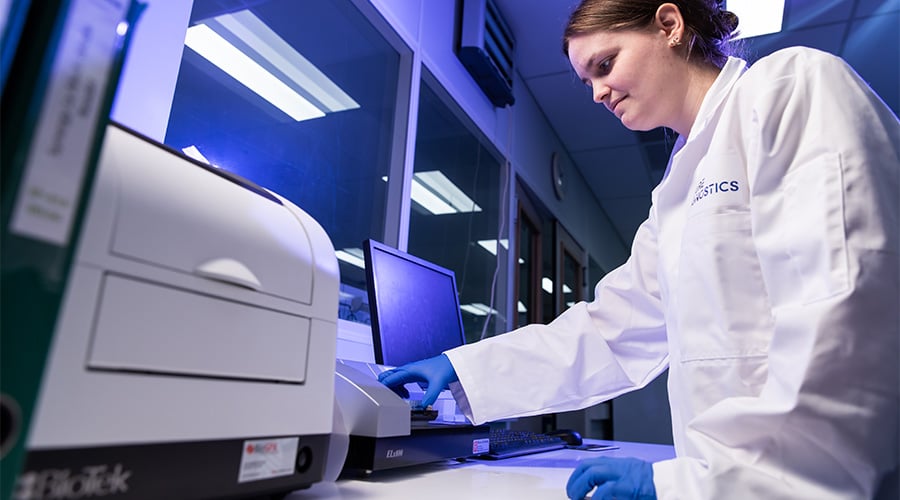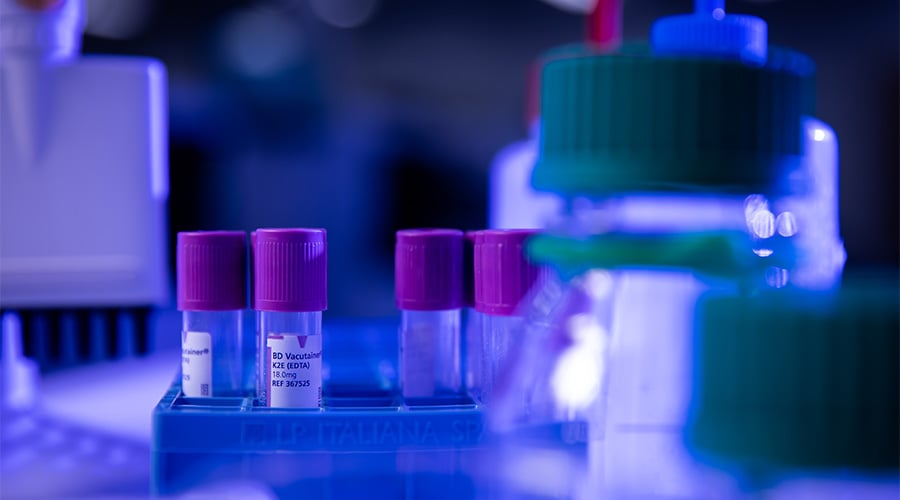Immune test or PCR test
These are the differences
Where our field used to be a rather unknown and unpopular world for our friends, family or strangers, the subject of testing has gained a lot of popular interest lately. But even though the advent of COVID-19 has made our daily work suddenly more exciting for everyone, it remains a difficult topic. After all, whether it concerns a test in a test lane or a home test, it’s difficult to understand how they work. And what are these immune tests and PCR tests we keep hearing about? What exactly do they test? How reliable are they? And what are the actual differences? In this blog we explain it all.

There are different kinds of coronavirus tests: tests that show whether you are carrying the virus at a certain point in time, and tests that give a definitive answer as to whether you have ever had the disease. Both things can be demonstrated, but they use two very different avenues to arrive at their result. And so, the choice of a particular type of test is always related to what you want to demonstrate.
To the test lane for a PCR test
A cotton swab in the nose and mouth; many people will be familiar with it by now. It’s standard procedure in coronavirus test lanes. The objective is to gather nasal and throat mucus in which the virus could be present. The swab is sent to a laboratory, where it’s subjected to a Polymerase Chain Reaction (PCR) test. The PCR test is used to determine whether the virus is present in the sample at that time.
The PCR test is a molecular test, using genetic viral material (RNA). Special enzymes cut a unique piece from the RNA of the virus present. This is then reproduced many times over to make it detectable. In this way, it’s possible to determine whether the material contains the RNA of the coronavirus. This is also the reason why there are no PCR home tests: it’s impossible to perform this test without the right reagents and equipment.
Laboratory test on the patient at the care location
So while there are no PCR self-tests, there are other tests that can be done at home. The testing method is also called ‘near patient testing or point of care testing (PoC)’ because it’s a laboratory test that can easily be brought to a patient. This makes it possible to get a result more quickly at the time and place where patient care is provided. If necessary, treatment decisions can be made almost immediately. Examples of PoC tests are blood glucose testing, drug screening, cholesterol screening and food pathogen screening. And these tests are now available for the detection of COVID-19 as well.
The PoC tests can be divided into different types. The quantitative PoC test, for example, determines the concentration of a particular substance in a sample. The qualitative variant tells you if a certain substance is present (like in a pregnancy test). Another division of PoC tests is into simple tests with a low risk of an error result and more complex ones. The latter, largest group should be carried out by professionals.
Immune test to determine whether someone has had COVID-19
And then there are the tests that determine whether a certain substance is present in the body now or was in the past. This type of test can detect anything from HIV and diabetes to a heart attack, and even coronavirus. This is checked on the basis of the presence of antibodies and antigens in bodily fluids, such as blood and urine. Antibodies are part of the immune system; they are produced a.o. in response to infection by a virus. To put it very briefly: If there is a reaction – in whatever way – it demonstrates that a pathogen such as a virus is or has been present. If no reaction occurs, the virus being tested for is not demonstrably present in the bodily fluid, has not been present or was present too long ago.

There are several serological tests (immuno tests) to determine if someone has had COVID-19. However, as similar the ultimate goal may be, the underlying technologies and methods are very different. Because it can take at least a week for sufficient antibodies to be present in the blood to detect them, these tests are primarily intended to gather information about human defenses against the virus. However, you can also use this type of test to determine whether a vaccination has done its job. Because if your body has reacted well to the vaccine, then those same antibodies will be present in your blood. This is called ‘titer determination’.
A lot of research needed for reliable home test
It would, of course, be ideal if everyone could do a reliable COVID-19 home test in case of suspected coronavirus infection, or an adequate immune test to determine if they’ve already had COVID-19. The advantages would be that this doesn’t require the intervention of a laboratory and the results take much less time. However, such tests require a long research process, and the legal procedures prior to market introduction are also extensive. This is only logical; it’s in everyone’s interest that the test results are reliable and provide certainty.
COVID-19 test development process: delicate and technical
New (rapid) tests are only used if they are fast, safe and reliable. Of course, these tests don’t develop by themselves. They require the involvement of professionals, as test development is a precise, delicate and specialist procedure. Only with high quality products, the most competent professionals and good communication can you achieve an optimal product development process.
Future Diagnostics has been highly skilled in the development of diagnostic grade immunoassays for 25 years. On request, we examine how specific analytes can be exposed, what the right reagents are and how the end product can be introduced to the market. In this way, we not only provide a high-quality test, but also a good starting position.